The four levels of AI-UX interactions
Creator of Aiverse
I had ̶a̶ ̶d̶r̶e̶a̶m̶ an epiphany.
It’s been 2–3 months since I’ve been trying out different AI-infused applications and subconsciously observing how they have integrated AI into their user experience (you can find ALL the AI-UX interactions on the aiverse.design library).
And I noticed a pattern.
The Altitudes of AI-UX
‘Altitude’ of AI-UX refers to the level at which an AI feature is interacting with the user, resulting in different user experiences. It’s not a common concept, you heard it here first!
In other words, it is the presence of AI in your applications. How prominently do you want the machine-smartness to be reflected to the user? How into-the-background or ambient do you want the infusion of AI?
If I were to take it a step further, all of the applications (+ experiences, considering that the future won’t be limited to singular apps) can be mapped on a 2D plane of multiplayer-ness vs interoperability-ness.
Multiplayer-ness:
How many human beings can be involved in the experience simultaneously?
Example: Figma ranges from single-player to multiplayer while Adobe After Effects is a single-player application.
Interoperability-ness:
The ability for two or more systems to work together seamlessly.
Example: Being able to collaborate on the presenter’s screen while screen-sharing on Skype. Or an AI agent being able to order your groceries (through Deliveroo) based on your week’s food nutrition req. and fitness goal.
Interoperability is paramount and leads to a reduction in screen time as the AI does most of the heavy lifting
The presence of AI is then the 3rd dimension (the visual below is an adaptation of RM’s Multiplayer Internet visual but for AI-UX).
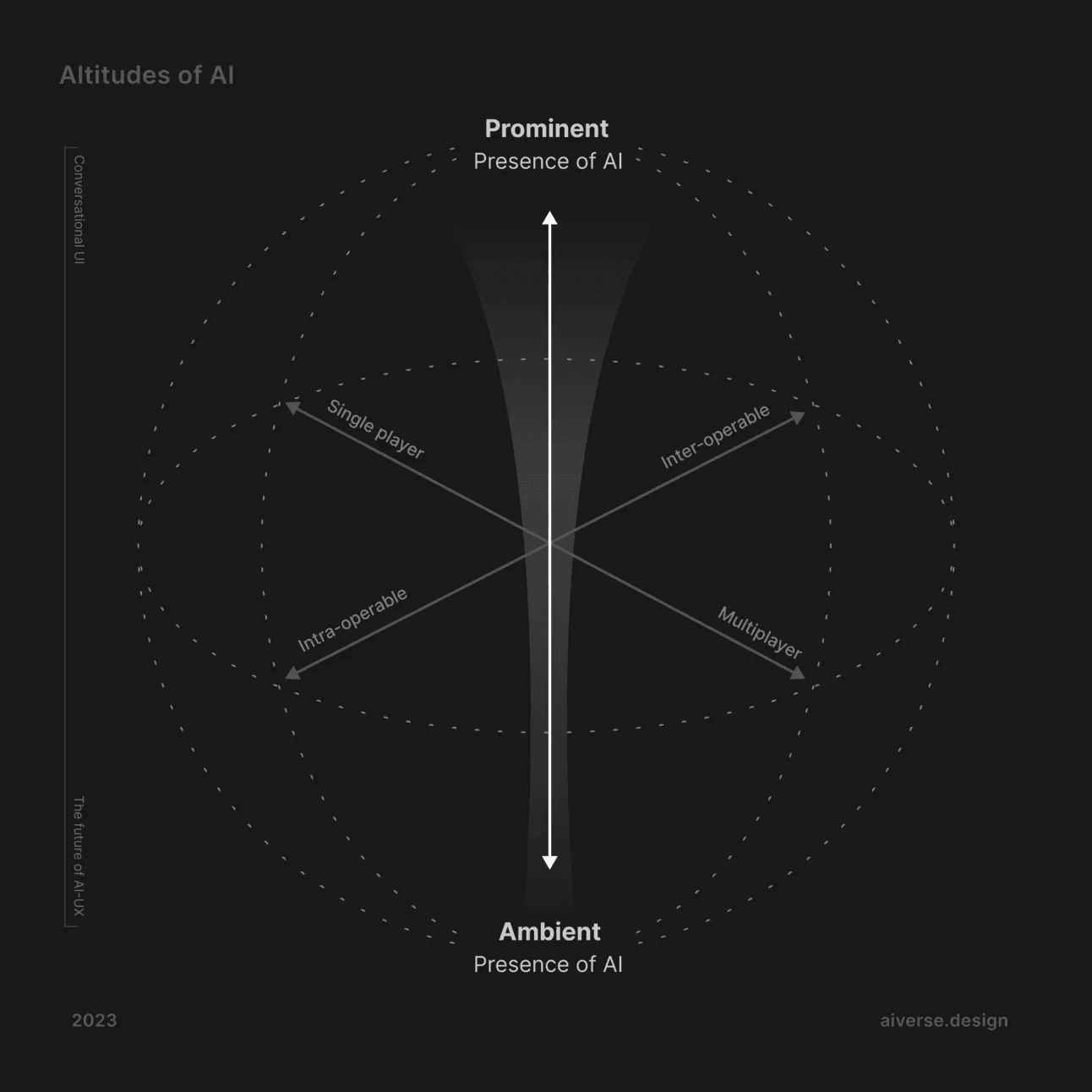
The altitudes of AI visual
For today, we’re diving into the 3rd dimension.There are 4 levels of presence of AI
Level 1 — The Immersive Nature
Level 2 — The Assistive Nature
Level 3 — The Invisible Nature
Level 4 — The Ambient Nature
Let’s get into it.
Level 1 — The Immersive Nature of AI
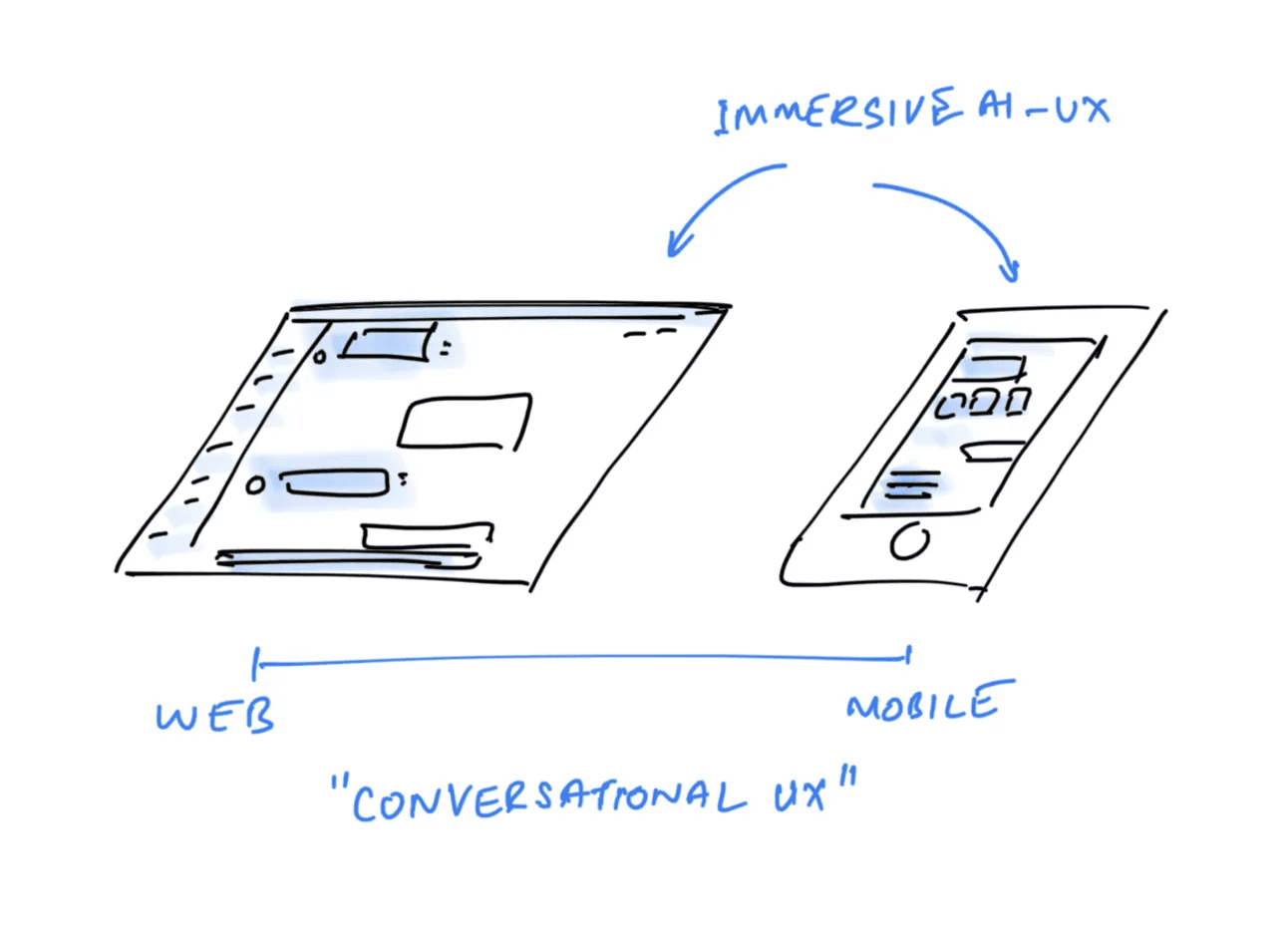
A sketch of common immersive AI-UX patterns
It’s kind of like Z-index: 1000; (for anyone familiar with CSS).
The basic use of AI for users is when it’s fully immersing the user in its capabilities.
Properties:
Direct interaction with the user.
It’s immersive in nature.
Conversational UI (conversing to get the answer instead of searching yourself) is a type of fully immersive nature of AI.
It’s how we got introduced to AI and its potential.
I like to look at it as a way to access AI. Conversational UX is one way of accessing AI’s capabilities, but what are some other ways? (something I like to ponder upon as I sit in the toilet every morning)
It’s a standalone application.
Examples — ChatGPT, Inflection’s Pi, Bing chat, New Computer.
But I don’t think the future is just Conversational UX.

Level 2 — The Assistive Nature of AI
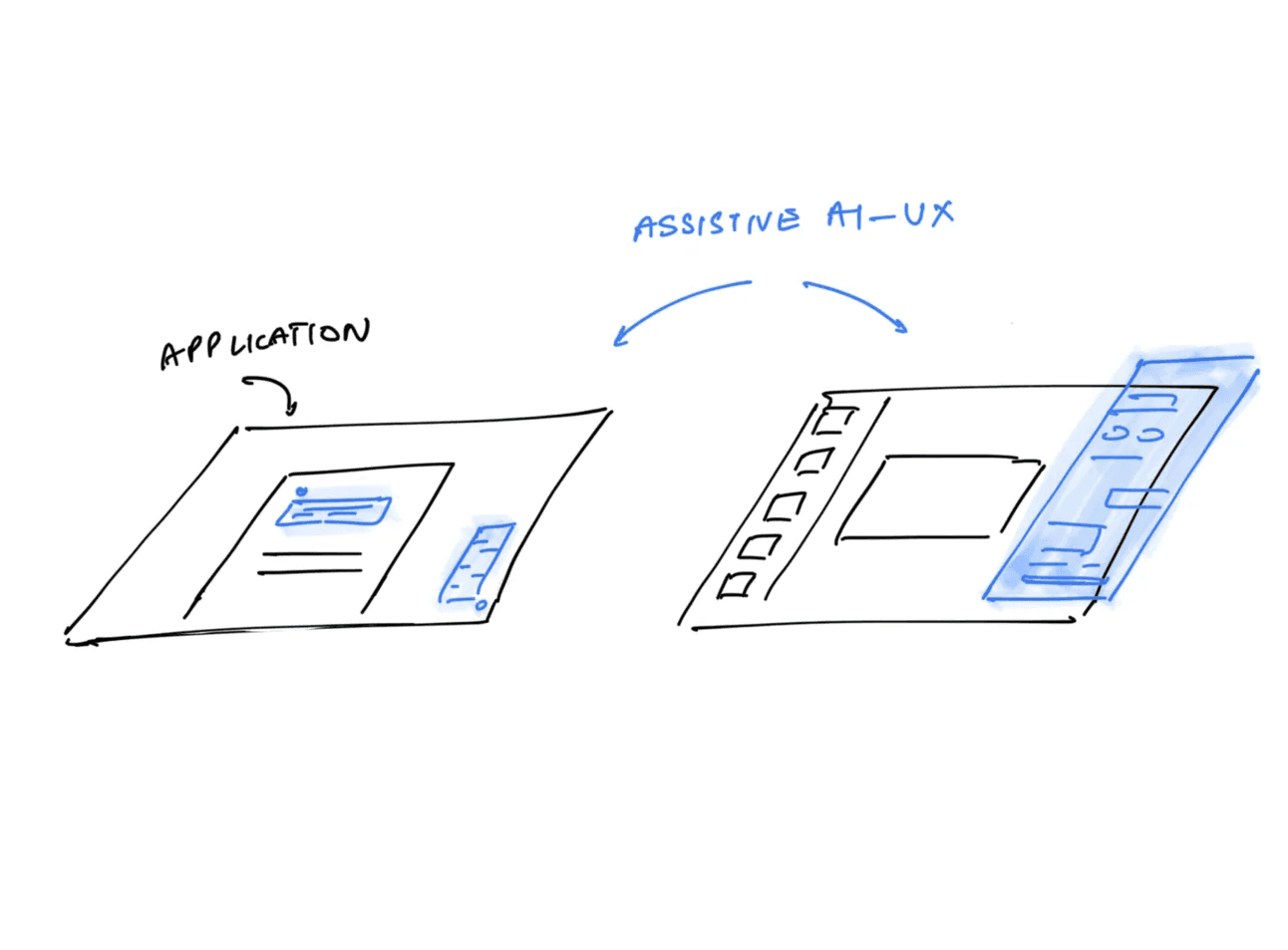
A sketch of common assistive AI-UX patterns
How do non-AI applications like Notion and Canva use AI?
The first step for all existing applications has been to introduce assistive AI features for the users.
Properties:
Interacts with the user when the user wants.
Accessible to the user at all times.
It’s assistive in nature.
Side panels and embedded pop-ups are a type of assistive AI.
Examples — Microsoft co-pilot, Notion Q&A.
Honestly, I loved the Notion Q&A feature so much! It’s accessible at different levels of user interaction and solves an imp. problem for the user.
Level 3 — The Invisible Nature of AI
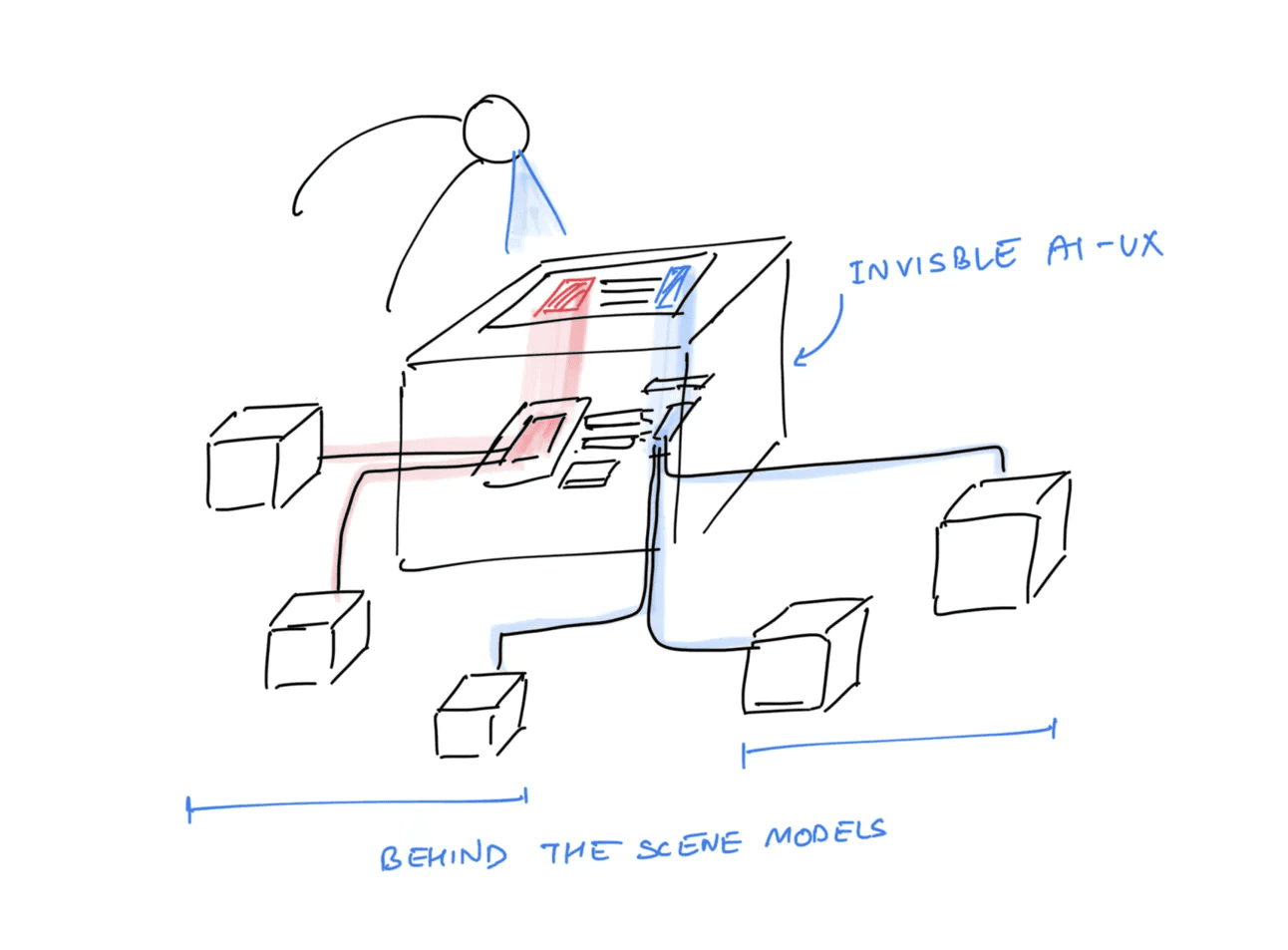
A sketch of common invisible AI-UX patterns
We’re not just creating interfaces, we’re crafting experiences. More and more of them will be invisible going forward.
Properties:
No interaction with the user.
It’s working in the background to provide the best user experience.
Dynamic interfaces are a type of invisible nature of AI.
Invisible can be various types —
Adaptive — like how Netflix has a dynamic interface that is designed in the moment and specific to each user. (read more)
Predictive — like when composing an email on Gmail, it suggests what I’m going to type based on what I’ve written.
Invisible — like Airbnb prices properties based on what I’m looking for (read more).
Person A (looking for cheap places) vs Person B (looking for sea-side view houses, no price cap), both may see the same house but with different pricing (person A’s would be cheaper than person B’s).
Okay okay, I waited 1300 words to FINALLY share this next piece of wild learning with you!
The best example of the invisible nature of AI (and the future of AI?) is AI-Agents
Bill Gates mentioned this as the future of computer-human interaction.
My guess is AI agents are a step into the invisible AI experience using gen-AI.
They are proactive.
They have the context of your digital AND physical world. They know when to step in.
“Clippy was a bot, not an agent“
“Clippy has as much in common with agents as a rotary phone has with a mobile device.
“If your friend just had surgery, your agent will offer to send flowers and be able to order them for you.”
— Bill Gates, on the future of computers
Level 4 — The Ambient Nature of AI
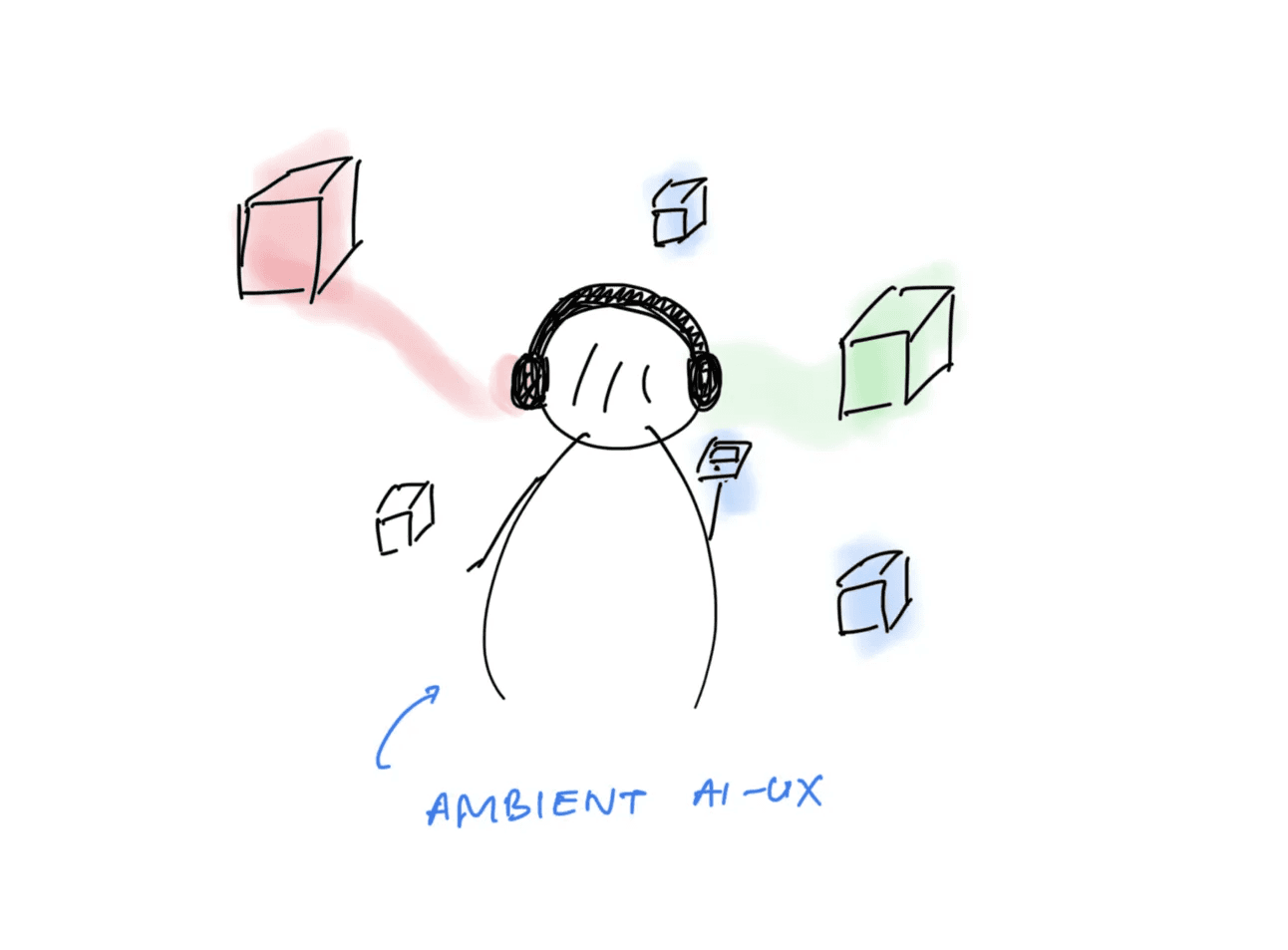
A sketch of common ambient AI-UX patterns
Things are going to get so much more interesting!
Properties:
To be defined…
It is the ultimate future of AI-UX interactions.
Because after this it’s AGI taking over and us going back to the forests, probably hunting *insert i’m-fine-fire-all-around meme*
What does it look like though?
AI seamlessly merged into your everyday physical background.
All experiences are controlled by AI agents. Each agent controls multiple applications.
Interactions are yet to be defined, but will voice be the new UI? (more on this below)
Examples — Google Nest’s Thermostat, Amazon’s Echo dot.
These are simpler examples, in our world for some time.
But it’s getting better, oh yes it is baby!
Integration of AI into physical products like glasses, pins, and pendants, around you has already started.
You must have heard about Humane AI Pin. Do I need to say more?
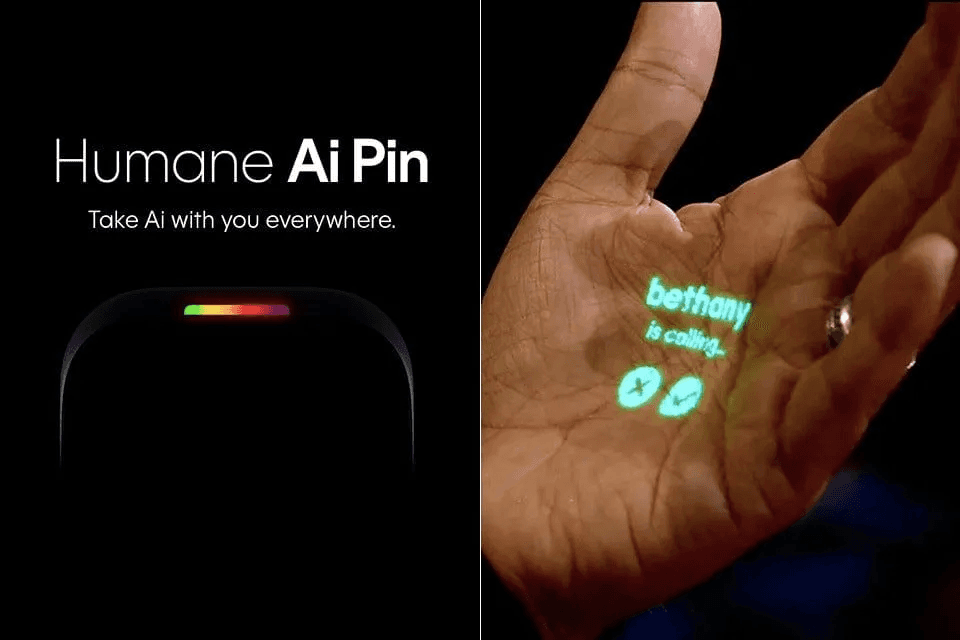
I think the first big breakthrough in human-agent interaction will be earbuds. If your agent needs to check in with you, it will speak to you or show up on your phone. (“Your flight is delayed. Do you want to wait, or can I help rebook it?”)
— Bill Gates on the future of computers
Sit tight, the future is unclear but for now -



